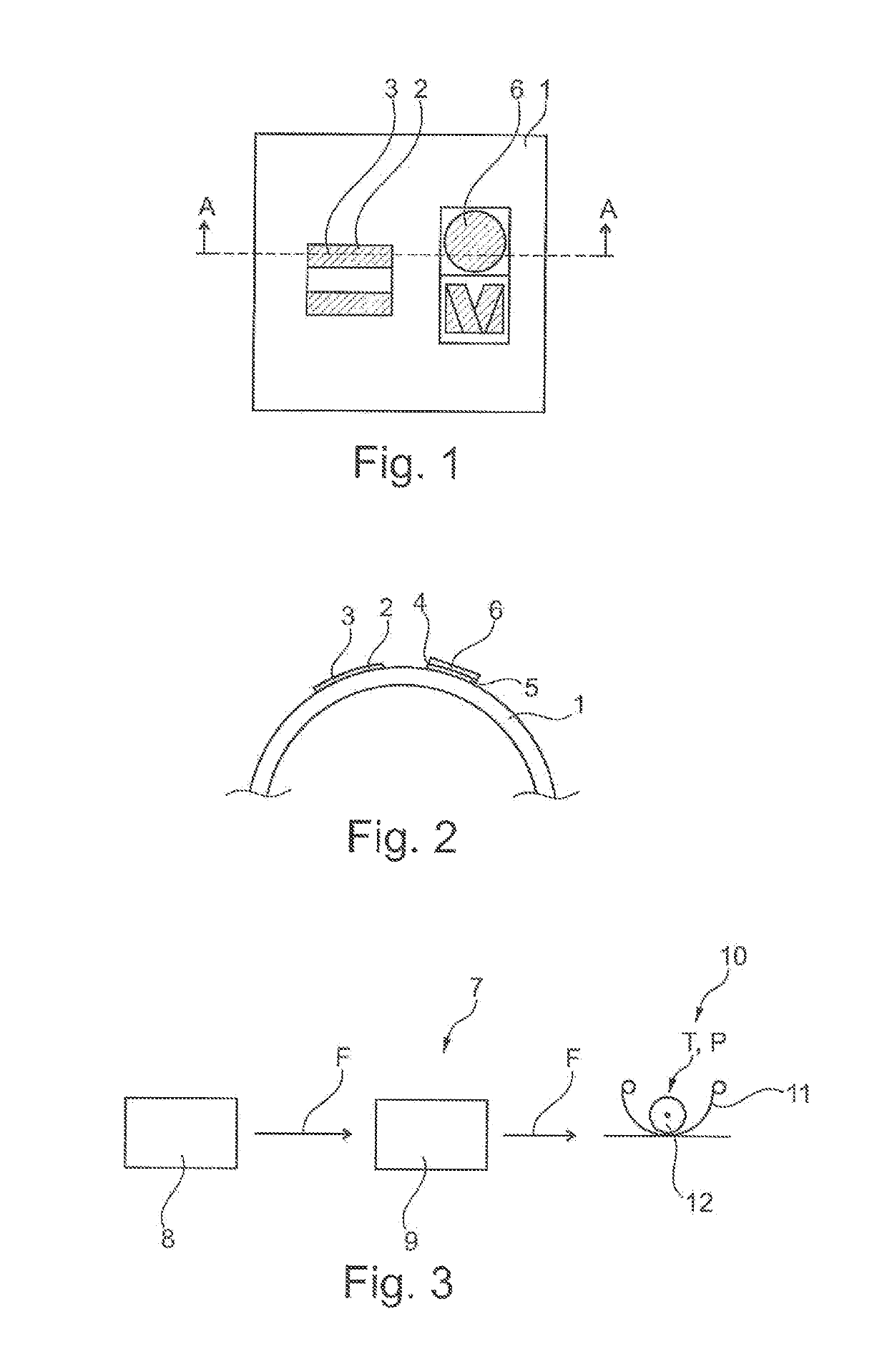Method for decorating substrates and decorated substrate
a technology for decorating substrates and substrates, applied in coatings, printing, other printing apparatuses, etc., to achieve the effects of reducing energy and costs, reducing processing window, and significantly lowering hot stamping temperatur
- Summary
- Abstract
- Description
- Claims
- Application Information
AI Technical Summary
Benefits of technology
Problems solved by technology
Method used
Image
Examples
Embodiment Construction
[0070]FIGS. 1 and 2 show a decorated substrate 1 made of glass. This is a three-dimensional substrate, as for example a bottle or a beaker.
[0071]Printed on the substrate 1, more specifically on the surface of the substrate 1, is a first pattern 2 composed of a first printing ink composition 3. Also located on the substrate 1 adjacent to the first pattern 2 is a second pattern 4 composed of a second printing ink composition 5; both printing ink compositions, 3 and 5, are radiation-cured, in this case by means of UV mercury vapor lamps, doped mercury vapor lamps, or LED emitters.
[0072]As is evident from a joint viewing of FIGS. 1 and 2, located immediately above the second pattern 4 is a decorative coating 6 which is applied by hot stamping and which comprises a color-determining varnish layer and also, beneath it, an aluminum layer, which adheres to the second pattern 4 by way of a pressure-sensitive adhesive layer of the original hot stamping foil. The peripheral contour of the seco...
PUM
| Property | Measurement | Unit |
|---|---|---|
| weight fraction | aaaaa | aaaaa |
| weight fraction | aaaaa | aaaaa |
| glass transition temperature | aaaaa | aaaaa |
Abstract
Description
Claims
Application Information
 Login to View More
Login to View More - R&D
- Intellectual Property
- Life Sciences
- Materials
- Tech Scout
- Unparalleled Data Quality
- Higher Quality Content
- 60% Fewer Hallucinations
Browse by: Latest US Patents, China's latest patents, Technical Efficacy Thesaurus, Application Domain, Technology Topic, Popular Technical Reports.
© 2025 PatSnap. All rights reserved.Legal|Privacy policy|Modern Slavery Act Transparency Statement|Sitemap|About US| Contact US: help@patsnap.com

